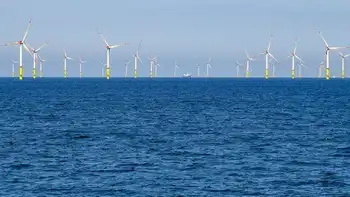Canadian-backed dam in Belize faces legal challenge
The Chalillo dam project on the Macal River has been the subject of a long legal battle, pitting a growing demand for electricity in Belize against the preservation of the Central American country's fragile natural resources.
The 49-metre high dam to be built by the Belize Electric Co. Ltd. — or BECOL, a subsidiary of Newfoundland-based Fortis Inc. — would flood about 810 hectares of land in the Macal River valley, says a coalition of nine environmental groups fighting its construction.
A large part of the valley consists of ancient rainforest that has been left untouched by humans since the age of the Mayas, about 500 years ago.
"This dam heralds a catastrophic dawn for one of Belize's most precious natural treasures," said Ute Collier of World Wildlife Fund International, one of groups behind the Belize Association of Non Governmental Organizations, or BACONGO.
"An unblemished wilderness teeming with exotic flora and fauna risks being razed to the ground and flushed from the face of the earth."
The group will argue that an environmental assessment and geological study done on the dam site by a British-based consulting company are deeply flawed.
It claims, among other things, that a geological survey has misidentified rock in the area as granite, raising questions about the safety and the cost of building the $30-million (U.S.) dam.
A judicial panel of the Privy Council — effectively Belize's supreme court under its membership in the Commonwealth — is being asked by the environmental coalition to stop construction until new environmental and geological surveys of the project are done. The council has scheduled two days to hear the case.
A spokesman for Fortis couldn't be reached for comment on Tuesday, but in August the company defended the dam after the Privy Council rejected an application for an interim injunction to stop construction until it rules on the project.
"We view the court's ruling as another vindication for BECOL for the misleading allegations made by BACONGO," said Lynn Young, a director of the electricity company.
Fortis said the environmental coalition has lost seven legal rulings in its battle against the dam.
Sharon Matola, director of the Belize Zoo and Tropical Education Centre, said the hydroelectric project would have a modest impact on the country's hydro supply, but places at risk rare species, including jaguars, tapirs and the last 200 scarlet macaws left in Belize.
"What we're selling off in order to do that (generate electricity) is one of the most pristine areas left in northern-central America, an area where you find species that have been driven to extinction in other parts of central America" said Matola.
"These species play a direct role to our socio-economics, I mean you are looking at a country that is growing in its stature for its nature-based tourism industry, this dam would do serious harm to that."
Related News

BloombergNEF: World offshore wind costs 'drop 32% per cent'
DENMARK - World offshore wind costs have fallen 32% from just a year ago and 12% compared with the first half of 2019, according to new research from BloombergNEF.
In its latest Levelized Cost of Electricity (LCOE) Update, BloombergNEF said its current global benchmark LCOE estimate for offshore wind is $78 a megawatt-hour.
“New offshore wind projects throughout Europe now deploy turbines with power ratings up to 10MW, unlocking CAPEX and OPEX savings,” BloombergNEF said.
In Denmark and the Netherlands, it expects the most recent projects financed to achieve $53-64/MWh excluding transmission.
New solar and onshore wind projects have reached parity with average wholesale…




